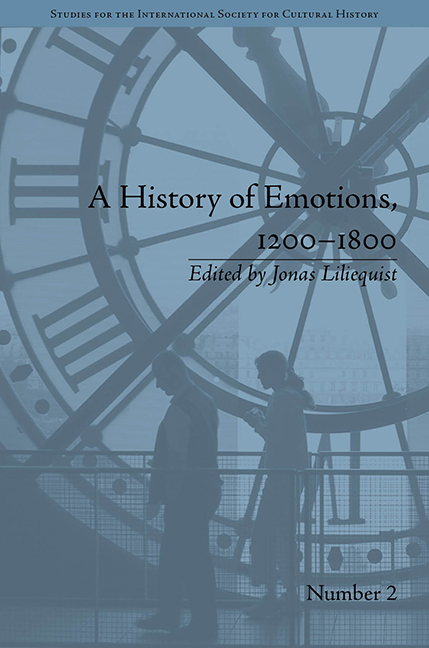Book contents
- Frontmatter
- Contents
- List of Contributors
- List of Figures
- Introduction
- I Theoretical Issues
- II Emotional Repertoires
- III Music and Art
- 6 Music as Wonder and Delight: Construction of Gender in Early Modern Opera through Musical Representation and Arousal of Emotions
- 7 Politesse and Sprezzatura: The History of Emotions in the Art of Antoine Watteau
- IV Gender, Sexuality and the Body
- V Uses of Emotions
- Notes
- Index
7 - Politesse and Sprezzatura: The History of Emotions in the Art of Antoine Watteau
from III - Music and Art
- Frontmatter
- Contents
- List of Contributors
- List of Figures
- Introduction
- I Theoretical Issues
- II Emotional Repertoires
- III Music and Art
- 6 Music as Wonder and Delight: Construction of Gender in Early Modern Opera through Musical Representation and Arousal of Emotions
- 7 Politesse and Sprezzatura: The History of Emotions in the Art of Antoine Watteau
- IV Gender, Sexuality and the Body
- V Uses of Emotions
- Notes
- Index
Summary
This essay explores the way that musical images in the paintings of Antoine Watteau (1684–1721) echo the evolving nature of emotional expression in late seventeenth- and early eighteenth-century France as it fell under the cultural influence of the neighbouring Italians. In his subtle renderings, Watteau's musical images reflect the connection between leisure and the reconfiguring of society, the flowering of music as an independent art, and a new form of emotional expression within the social climate. Watteau's pictures are part of an important sign system for engaging high and low culture as well as French and Italian modes of sentimental display; his art mixes emotional zeal with refinement and taste. Watteau identifies the improvisational, fluid characteristics of music making while calling attention to medium and process, informing his lucent brush with apparent facility and inventing a fresh mode of painting. Although physiologists had no means of observing music's effects on the nervous system directly, Watteau's blending of musical, emotional and social milieus visually embody the divergent sensibilities – that is, the waning of the absolutism of the ancien régime and the incorporation of Italian themes in theatre and music – that defined his time.
Music, by its very nature, enabled an enrichment of sympathetic responses to varying stimuli by way of expanding an emotional vocabulary characterized by timbre, melody, rhythm and harmony.
- Type
- Chapter
- Information
- A History of Emotions, 1200–1800 , pp. 105 - 118Publisher: Pickering & ChattoFirst published in: 2014



